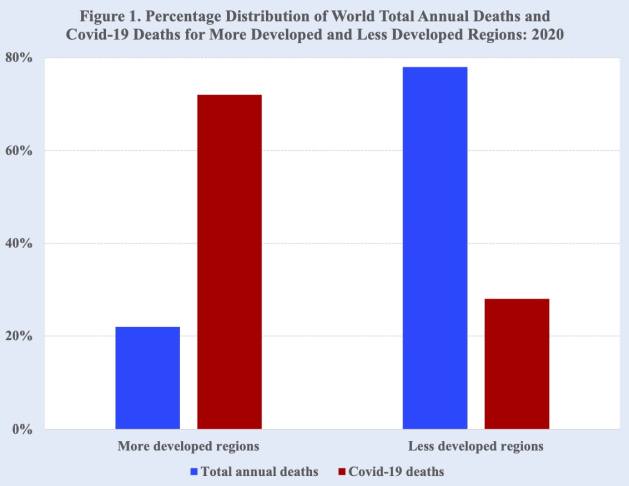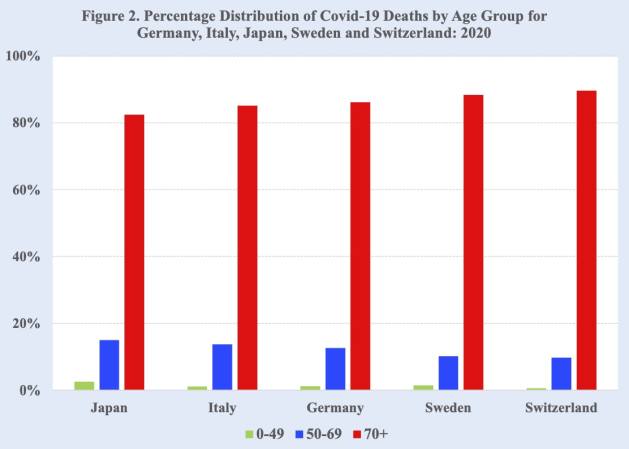
NEW YORK, Jun 15 2020 (IPS) – While the end of life remains the inescapable fate of every man, woman and child, death can be delayed as has been repeatedly throughout human history. Amid the current coronavirus pandemic, a paramount objective is delaying death from Covid-19 for many millions of people across the globe.
Yet, now approaching 500,000 worldwide and many more expected before a vaccine becomes available, the objective of delaying deaths due to the novel coronavirus is far from being realized. Greater efforts are clearly required to contain the pandemic’s spread and minimize its lethal consequences, especially among those most vulnerable.
Delaying death has significantly extended the length of human lives worldwide. Average today for the world is 73 years, or more than twice the level at the start of the 20th century. At age 60 years average life expectancy is 21 years, which is nearly a decade longer than it was at the end of the Second World War, with growing numbers of those older women and men surviving to become .
Since the start of 2020, the numbers of have grown rapidly and spread relentlessly across the globe. Among the major regions, however, Covid-19 deaths are distributed very differently than the world’s estimated total annual deaths. The more developed regions, which account for 22 percent of total annual deaths worldwide, have experienced a surprising 72 percent of Covid-19 deaths (Figure 1).

Source: United Nations Population Division for estimated total annual deaths in 2020 and Worldometer for Covid-19 deaths as of 12 June 2020.
In striking contrast, the less developed regions, which account for 78 percent of the world’s estimated total annual deaths, have experienced about 28 percent of the Covid-19 deaths. A plausible explanation for this unexpected distribution of coronavirus deaths remains unclear.
In addition to its unusual regional distribution, Covid-19 deaths are heavily concentrated in the oldest age groups. In many developed countries, such as Germany, Italy, Japan, Sweden and Switzerland, 80 to 90 percent of Covid-19 deaths are among those aged 70 years and older (Figure 2).

Source: National statistics as of 3 June 2020.
In general, children and adults below age 50 years have been found to have relatively from the disease. The elderly and those with pre-existing , such as heart disease, diabetes, asthma and obesity, face higher risks of becoming severely ill from the coronavirus and have experienced relatively high Covid-19 mortality rates. Many of the elderly deaths have occurred in and , where the disease was able to spread easily due to close living conditions and inadequate health safeguards.
However, from some developing countries, such as Brazil, India and Mexico, are finding that the novel coronavirus are killing far higher percentages of young people than was experienced in the wealthier developed countries. In almost half of the Covid-19 deaths are reported to be below age 60 years and in nearly one fourth of the Covid-19 deaths were aged 25 to 49 years. This new twist in Covid-19 mortality highlights the unpredictable nature of pandemic as it continues to spread across the various regions of the world.
Covid-19 death rates also vary markedly by sex. More men than women have succumbed to the coronavirus. Current estimates are finding that the majority of Covid-19 deaths, approximately , are men. Why the novel coronavirus tends to affect men more severely than it does women has not yet been established.
Historically, delaying death came about largely through a complex, integrated combination of individual behavior, collective action, scientific knowledge and human ingenuity. And that four-factor combination continues to be the basic strategy needed to effectively confront the novel coronavirus pandemic.
The less developed regions, which account for 78 percent of the world’s estimated total annual deaths, have experienced about 28 percent of the Covid-19 deaths. A plausible explanation for this unexpected distribution of coronavirus deaths remains unclear
As has been the case in previous pandemics, a crucial ingredient in confronting the novel coronavirus is individual behavior. Individuals, especially the elderly and those with preexisting health conditions, can take numerous precautions to limit their exposure to the coronavirus, minimize their chances of contracting COVID-19 and reduce the risks of infecting others. Those precautions need to be continued when people return to their normal daily activities, including employment, personal responsibilities and recreation.
Social distancing, hand washing, mask wearing, disinfecting touched surfaces, avoiding crowded places and staying at home when ill are among the responsible actions that each individual can take to limit the spread of the coronavirus. Prudent health practices are also essential at the workplace, in schools, in shops, during travel, when attending religious services and participating in social events.
Collective action to safeguard the public’s health and wellbeing is also a vital component in addressing the pandemic. In addition to facilitating testing, tracing and isolating and providing access to urgent medical care, local governments and communities can limit the number, size and types of gatherings, enlist the cooperation of businesses and institutions, identify people in need, support medical and essential workers and assist the elderly and other high-risk groups.
Governments at the national level have a key role in confronting the coronavirus pandemic. Based on past pandemics, history indicates that their efforts should focus on timely and decisive actions in critical areas. Among those areas are providing leadership, coordinating overall strategies, promoting sound information and clear messaging, supporting research, testing and data collection, softening the economic consequences and cooperating with regional and international efforts to curb the spread of the pandemic and limit its deadly consequences.
Also, very importantly, government officials should avoid politicizing the pandemic. National leaders need to unite the efforts of the entire country, as has been in a number of countries such as Germany, Japan, New Zealand and Vietnam, to stem the spread of the coronavirus disease and reduce Covid-19’s death toll.
Much remains unknown about the novel coronavirus as the pandemic is still in its initial stages. Nevertheless, preliminary evidence clearly finds that early, comprehensive and sustained mitigation interventions by governments, local communities and public health organizations coupled with responsible individual behavior can result in comparatively low Covid-19 death rates.
Scientific studies are continuing to determine infection levels, case fatality rates, effective treatments, the extent of immunity after surviving an infection, health complications from the illness and whether herd immunity through infection can be achieved and if so, the expected numbers of deaths to reach herd immunity. Until a vaccine becomes available, scientific knowledge provides valuable insight and useful guidelines for individuals, communities and governments to curb the contagion’s spread.
Scientists and medical researchers around the world with the valuable support of governments, businesses, global agencies, foundations, non-governmental organizations and individuals are racing at record speed to discover a vaccine for Covid-19. Recently reported are encouraging and point to a possible vaccine in the near future. However, human ingenuity to develop an effective and widely available vaccine may require considerably more time for research and testing than currently envisioned.
Throughout its thousands of years of history, humanity has endured through many terrible pandemics. The deadliest pandemic in recent history, the 1918 , killed more than 50 million people worldwide. Much has been learned from past pandemics and that accumulated knowledge and experience coupled with today’s medical and public health expertise should be utilized to effectively confront the current pandemic.
Irrespective of political ideology, religious beliefs, economic status, educational level, citizenship, age or sex, death remains the inescapable fate for the world’s population of nearly 8 billion men, women and children. Although unavoidable, death’s timing can be delayed even now amid the coronavirus pandemic through a combination of individual behavior, collective action, scientific knowledge and human ingenuity.
*Joseph Chamie is an independent consulting demographer and a former director of the United Nations Population Division.